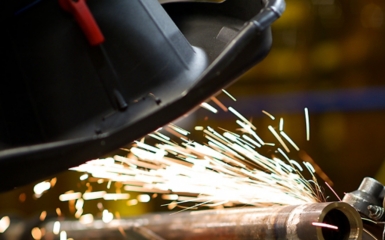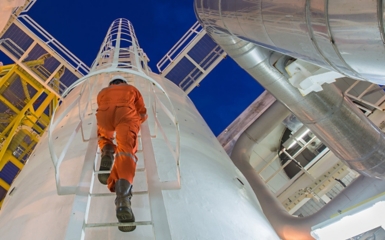The control of volatile organic compounds (VOCs) is of utmost importance. VOCs, if released into the atmosphere, can have detrimental effects on the environment, acting as precursors to ozone and smog formation. Consequently, regulations worldwide demand the capture or destruction of VOCs to mitigate their release. To meet these requirements, two primary technologies are employed: vapor recovery units (VRUs) and vapor combustion units (VCUs). In this article, we will assess these vapor control options and introduce a suitable technology where vapor combustion technology is chosen.
Vapor Recovery Units (VRUs)
VRUs are a green solution for controlling VOC emissions in specific applications. They are designed to capture VOCs and convert them back into a liquid product, thereby preventing their release into the atmosphere. VRUs are an environmentally friendly choice as they do not produce nitrogen oxide (NOX) or carbon monoxide (CO), and they operate efficiently without the need for supplemental fuel gas.
However, VRUs have their limitations. They use activated carbon for VOC removal, which is not compatible with all VOCs, including strong oxidizers like ketones and aldehydes. Additionally, VRUs struggle to capture small volatile molecules like methane. VRUs also have the economic benefit of recovering vapor and converting it back into a liquid product. In some cases, this can lead to a significant return on investment. Nevertheless, complications may arise when high-purity recovery is required, as all the vapor sent to the VRU gets recovered into a single liquid product stream, which may not be suitable for all applications.
Vapor Combustion Units (VCUs)
VCUs offer an alternative approach to controlling VOC emissions. Instead of recovering VOCs, VCUs destroy them through combustion. This technology can handle a broader range of VOCs compared to VRUs and does not suffer from compatibility issues with certain compounds. Capital cost is a significant factor in choosing VCUs over VRUs, as traditional VCUs tend to be more cost-effective, especially for vapor streams containing less than 6% hydrocarbons. VRUs may require pre-treatment devices, such as vapor saturation steps, to ensure efficient recovery, increasing their overall size.
Introducing the John Zink NOxSTAR VC System
For applications where vapor combustion technology is the preferred choice, the John Zink NOxSTAR VC System emerges as a standout option. This innovative system offers several advantages over traditional VCUs:
- Destruction Efficiency: The NOxSTAR VC System achieves destruction efficiencies (DE) of up to 99.99%, ensuring thorough VOC elimination.
- Low NOX Emissions: The system achieves ultra-low NOX emissions while also maintaining CO emissions as low or lower than 0.015 lbs/million Btu, making it a low-impact solution.
- Technical Challenges: Traditional VCUs face technical challenges in achieving low NOX emissions. However, the NOxSTAR VC System overcomes these issues and adapts to the variable flow rates and compositions typical of vapor control applications.
Understanding NOX Reduction
The NOxSTAR VC System excels in reducing NOX emissions through three distinct mechanisms: Thermal NOX, Fuel NOX, and Prompt NOX. Thermal NOX, the largest contributor to NOX formation, results from the combustion air’s reaction with atmospheric nitrogen and oxygen. By reducing the peak flame temperature, this source of NOX is minimized. Fuel NOX, on the other hand, is not typically present in VCU applications. Finally, Prompt NOX is reduced by combusting the fuel in a lean (air-rich) environment.
Designing a Low NOX System
Building on these principles, the NOxSTAR VC System is designed to adapt to varying flow rates and compositions using a total hydrocarbon analyzer to precisely control the waste gas mixture just before combustion. This approach ensures consistently lean waste gas concentration, optimizing combustion temperature and achieving low NOX emissions. This technology offers NOX emissions as low as 0.02 lb/million Btu, surpassing traditional VCUs.
Versatility and Safety
The NOxSTAR VC System is versatile and suitable for various fuel gas types and services, including ship/barge loading, truck/railcar loading, and tank venting across various markets. Safety and reliability are paramount, with advanced features like computational fluid dynamics (CFD) analyses and system self-diagnostics ensuring safe and controlled operation.
Conclusion
While vapor recovery technology is not universally applicable due to technical or commercial constraints, the NOxSTAR VC System offers a robust solution for applications demanding low NOX and high destruction efficiency. With its impressive performance metrics, adaptability, and safety features, this technology stands as a logical choice for modern vapor control requirements. By embracing technologies like the NOxSTAR VC System, we can effectively combat VOC emissions and contribute to a cleaner and more sustainable environment.



